Checking LG washing machine bearings
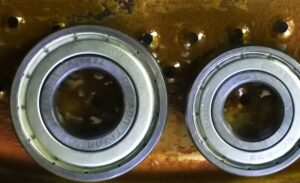 Despite all the technology and increased safety, modern technology can still fail at some point. One of the most common causes of washing machine breakdowns is bearings. But don’t rush to buy new parts right away, because first you need to check the bearings on your LG washing machine. We will tell you in detail how you can accurately determine the cause of the breakdown, so as not to waste a lot of time and money.
Despite all the technology and increased safety, modern technology can still fail at some point. One of the most common causes of washing machine breakdowns is bearings. But don’t rush to buy new parts right away, because first you need to check the bearings on your LG washing machine. We will tell you in detail how you can accurately determine the cause of the breakdown, so as not to waste a lot of time and money.
We determine the breakdown without disassembling the machine
Checking bearings with a washing machine provides comprehensive information, but it is difficult. There are methods without disassembling the equipment, but only a service center specialist can apply them professionally. This is due to the fact that if an element has just begun to fail, it will be very difficult to visually determine this, since the signs of destruction will be minimal. Therefore, if you do not have professional education or extensive experience, then, most likely, a direct drive washing machine will still have to be at least partially disassembled. However, there are a number of characteristic signs that can indicate bearing deformation.
- The machine makes strange noise during the working cycle. Extraneous noise may not be heard during the spin cycle, but these metallic sounds, grinding and knocking can be very noticeable during washing and rinsing.
- Poor quality spin. Due to the fact that the drum cannot rotate at maximum speed, the clothes will remain wet, as if there was no spinning at all.
- Excessive vibration.This is due to the fact that if the bearings are damaged, the balance disappears, and the direct drive washing machine begins to sway more than usual during operation, although this is not always easy to detect.
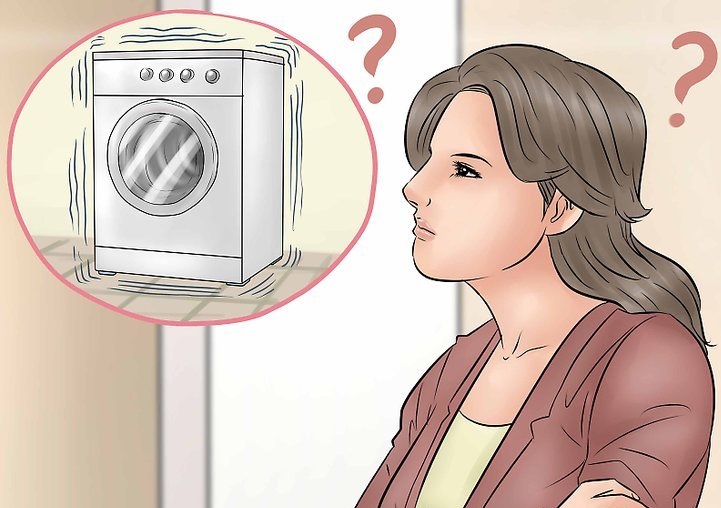
- Damage to the cuff. This also indirectly indicates that it is time to replace the bearings.
In addition to all of the above, it is also worth highlighting the following quick verification method. To use it, you need to disconnect the washing machine from the power supply, open the hatch slightly, press the drum on top with your finger and gently shake the part. The element should move smoothly and without play simultaneously with the tank.
If you feel a clear imbalance between the tank and the drum, then this is an almost 100% guarantee of bearing failure.
Try spinning the washer drum very hard. When it moves without obstacles and with a slight hum, there are no problems. However, if the drum makes extraneous noise when moving and rotates unstably, then the bearings need to be replaced. Most often they fail due to manufacturing defects and natural wear and tear during operation.
Let's inspect the back wall of the tank
Now let's move on to diagnostics with a partial analysis of the equipment, but without working with the drum itself. Thus, it is possible to confirm or refute the information obtained after preliminary tests. To do this you will need:
- disconnect the device from all communications;
- remove the back wall of the machine body;
- evaluate the back wall of the washing machine tank.

First of all, you should pay attention to lubricant leaks, as well as unpleasant rusty stains. A rusty “path” will go down the back wall of the tank from under the inverter motor housing.
This indicates that the parts are being destroyed and oil is leaking from them.If you find something like this on the back wall of the tank, then you don’t even have to return the equipment to its place, because you shouldn’t use the machine without replacing the failed bearings. In this condition, the equipment is unusable, so you will either have to call a service center specialist or replace the parts yourself.
Interesting:
Reader comments
- Share your opinion - leave a comment

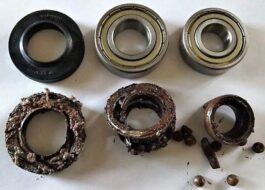


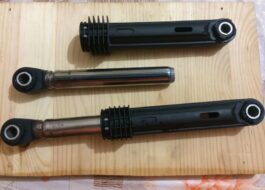
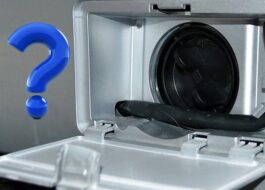
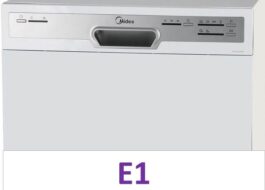














Add a comment